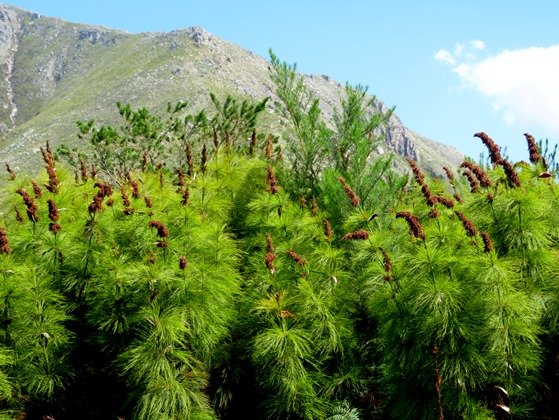Elegia

Elegia is a genus of tufted or rhizomatous perennials in the Restionaceae family.
The widely spaced culms are simple or branched, cylindrical or compressed, often growing secondary, short, sterile stems from culm nodes. The usually deciduous leaf sheaths fit tightly or loosely around the culms, persistent in some species.
The male inflorescences (on separate but similar plants) usually have woody perianths, the florets often smaller than the female ones but otherwise similar. The spikelets are numerous, terminal and solitary, or growing in spikes or panicles. The compressed perianths have six segments. The anthers are visible but short-lived. The many spikelets produce much pollen, often ripe for release after rain.
The female inflorescences comprise large numbers of compact spikelets clustered at nodes behind persistent spathes. The spikelets vary in number of florets across the species, longer than their bracts. The perianth is somewhat three-angled, bony and black. The styles are feathery. The plants are wind-pollinated. The one-locular ovary is usually three-angled, the fruit a three-angled, quite small nutlet or capsule.
The 35 Elegia species are found in the Northern, the Western and the Eastern Cape. The plant in picture is Elegia capensis (Dorrat-Haaksma and Linder, 2012; Leistner, (Ed.), 2000; Vlok and Schutte-Vlok, 2015; Manning, 2007).

